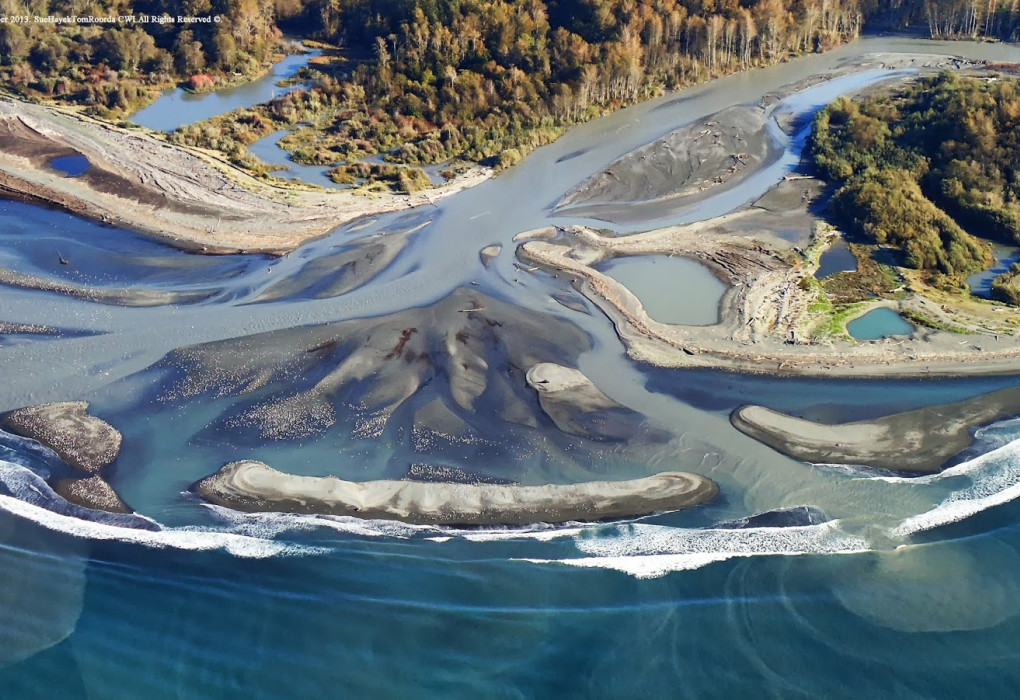Great for the Elwha, Good for the Nisqually, Now Onto the Skagit
Great for the Elwha, Good for the Nisqually, Now Onto the Skagit
August 16, 2016
(Oregon City) - Yesterday the Washington Department of Fish and Wildlife announced the designation of two new Wild Steelhead Gene Banks -- the Elwha and Nisqually rivers in Puget Sound. These watersheds, like the six Wild Steelhead Gene Banks designated before them, stem from Washington's 2008 Statewide Steelhead Management Plan, which recommends the creation of hatchery free watersheds to protect wild steelhead from the many risks posed to them by hatchery steelhead. As a result of the Wild Steelhead Gene Bank designation, the Elwha will sunset its hatchery steelhead releases and the Nisqually will continue its current wild steelhead only management.
Is fishing allowed in Wild Steelhead Gene Banks? Yes! That's right fishing opportunities are possible without hatchery programs. That's the case currently on the Sol Duc, Wind, East Fork Lewis, North Fork Toutle/Green and the Grays and Chinook rivers -- all of which are Wild Steelhead Gene Banks.
The only difference is that fisheries in Wild Steelhead Gene Banks must ensure wild steelhead continue to recover -- remember these fish are still protected under the Endangered Species Act. So, what does this all mean exactly? Catch and release, artificial flies and lures, single barbless hooks, keep 'em wet (yep, that's a regulation in Washington) and if the forecasted run size is too small, the fishery will close until sufficient numbers of wild fish show up for spawning.
The Elwha and Nisqually are Washington's first Wild Steelhead Gene Banks designated in Puget Sound and the 7th and 8th in the state overall. Both watersheds are good candidates for the designation as they support significant wild steelhead populations that remain genetically distinct from previously released early return hatchery steelhead. Both rivers also contain sufficient habitat to rebuild and sustain wild populations.
The Nisqually River, which flows south off of Mt. Rainier, has not received hatchery steelhead plants since 1982. While much of its headwaters is no longer accessible due to Alder Dam, significant habitat improvements including large scale restoration of its estuary are beginning to pay off. According to 2016 spawning surveys, more than 2,000 wild steelhead returned to the Nisqually last year, a significant increase from the several lean years of 300-500 wild fish. Currently, the Washington Department of Fish and Wildlife opens the Nisqually to recreational fishing from July 1 - September 30th for stray hatchery fish. This limited season is expected to continue.
While designating the Nisqually River as a Wild Steelhead Gene Bank does not gain new ground for wild steelhead, like the Wind River before it, codifying protections for these wild populations from future hatchery releases provides these fish with a long runway for recovery.
Thanks to our many members and supporters, the Washington Department of Fish and Wildlife received overwhelming support for the designation of the wild and free flowing Elwha River during last summer's public comment process. The Elwha's headwaters, which are found in Olympic National Park are now accessible to wild steelhead for over 40 miles. In fact, wild steelhead were spotted upstream of the former dam site just a month or so after the two dams were breached in 2012. The current wild steelhead broodstock program is planned to sunset as wild steelhead numbers climb and river conditions continue to improve. A 5-year moratorium on fishing will continue through 2017 to aid the recovery of the river's wild, native fish populations. Adding such a pristine and undammed river to the state's network of Wild Steelhead Gene Banks is a tremendous victory for wild steelhead.
What about Wild Steelhead Gene Banks in North Puget Sound? The Skagit River!? Yes, thanks to your efforts we also overwhelmed the Washington Department of Fish and Wildlife with support for designating the whole Skagit River as a Wild Steelhead Gene Bank. In fact, over 90% of the comments received by the department supported the Skagit. Certainly a huge margin of support by any measure.
Nevertheless, state managers would like to convene another stakeholder advisory group to determine the future of the Skagit River and its wild steelhead. Members, friends, supporters and River Stewards stay strong! The good news is that we still have an opportunity to do what's best for wild steelhead and secure the entire Skagit as a Wild Steelhead Gene Bank. We cannot let up! We must keep weighing in at every possible opportunity. All of our efforts are worth it when you consider what it would mean for Puget Sound's wild steelhead to once again have a bright future with the legendary Skagit River and its wild steelhead at the center of the recovery. With over 9,000 wild steelhead returning annually the Skagit is the largest and most diverse watershed emptying into Puget Sound, this is a wild steelhead cause worth fighting for -- stick with us!
Stay tuned, as there will likely be another public comment opportunity this fall or early winter and as always thank you for your continued support! If you're interested in participating on the North Puget Sound Steelhead Advisory Group please contact River Steward Program Director, Conrad Gowell.

